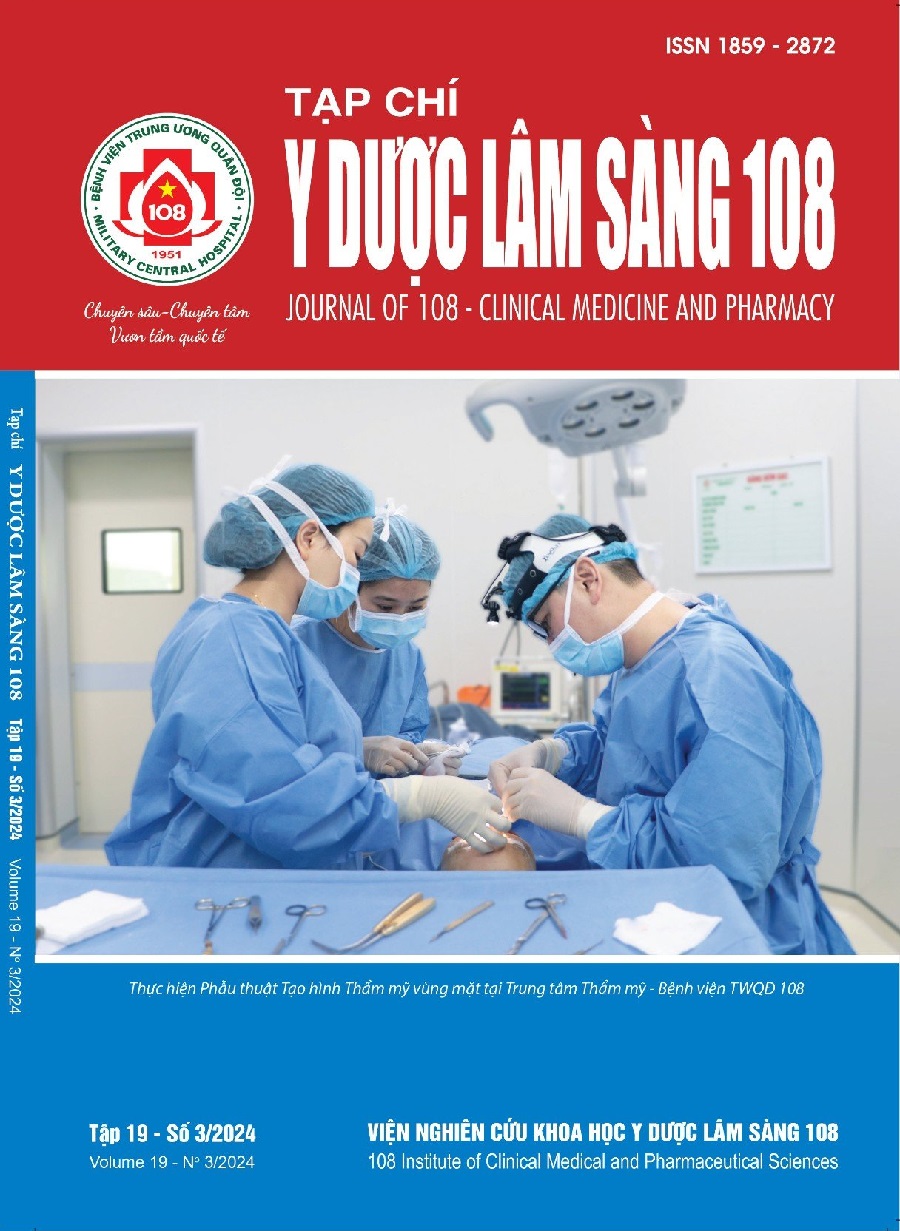Mini face lift with C incision in temporal area at the 108 Military Central Hospital
Main Article Content
Keywords
Abstract
Objective: Present the indications, techniques and results of mini facelift (partial lift) with C-shaped incision in the temporal area, complications and how to handle them. Subjects and method: From March 2020 to March 2023, there were 139 patients (2 men, 137 women) aged from 39 to 63 with varying degrees of sagging cheek skin, which could be combined with deep nasolabial folds, subcutaneous fat accumulation in the submandibular area, jaw angle are treated with mini facelift surgery with C-shaped sutures in the temporal area, combined with the SMAS layer suspended with permernent threads. Prospective method of clinical intervention, longitudinal follow-up. Result: 83.5% of results were excellent, 2 cases (1.5%) had poor results. There was 1 case of bleeding complications after surgery, 2 cases of post-operative skin pigmentation disorders requiring prolonged treatment. Conclusion: Mini facelift with C-shaped scar in the temporal area combined with using SMAS suspension is highly effective in cases of moderate facial skin laxity, and can be well applied in cases of sagging skin, moderate and severe skin bleeding. Safe, simple, easy-to-implement technique.
Article Details
References
2. Wei B, Duan R, Xie F, Gu J, Liu C, Gao B (2023) Advances in face-lift surgical techniques: 2016-2021. Aesthetic Plast Surg 47(2):622-630. doi: 10.1007/s00266-022-03017-z. Epub 2022 Jul 26.PMID: 35882647.
3. Gülbitti HA, Colebunders B, Pirayesh A, Bertossi D, van der Lei B (2018) Plast reconstr surg. (3):341e-347e. doi: 10.1097/PRS.0000000000004101.PMID: 29481392. Thread – Lift Sutures: Still in the Lift? A Systematic Review of the Literature.
4. Baker SR (2009) Deep plane rhytidectomy and variations. Facial Plast Surg Clin North Am. 17(4): 557-573.
5. Lefkowitz T, Hazani R, Chowdhry S, Elston J, Yaremchuk MJ, Wilhelmi BJ (2013) Anatomical landmarks to avoid injury to the great auricular nerve during rhytidectomy. Aesthet Surg J 33(1): 19-23.
6. Pitanguy I, Ramos AS (1966) The frontal branch of the facial nerve: The importance of its variations in face lifting. Plast Reconstr Surg 38(4): 352-356.
7. Jacono AA, Ransom ER (2012) Patient-specific rhytidectomy: Finding the angle of maximal rejuvenation. Aesthet Surg J 32(7): 804-813.
8. Jacono AA, Alemi AS, Russell JL (2019) A meta-analysis of complication rates among different SMAS facelift techniques. Aesthet Surg J 39(9): 927-942.
9. Gunter AE, Llewellyn CM, Perez PB, Hohman MH, Roofe SB (2021) First bite syndrome following rhytidectomy: A case report. Ann Otol Rhinol Laryngol 130(1): 92-97.
 ISSN: 1859 - 2872
ISSN: 1859 - 2872
